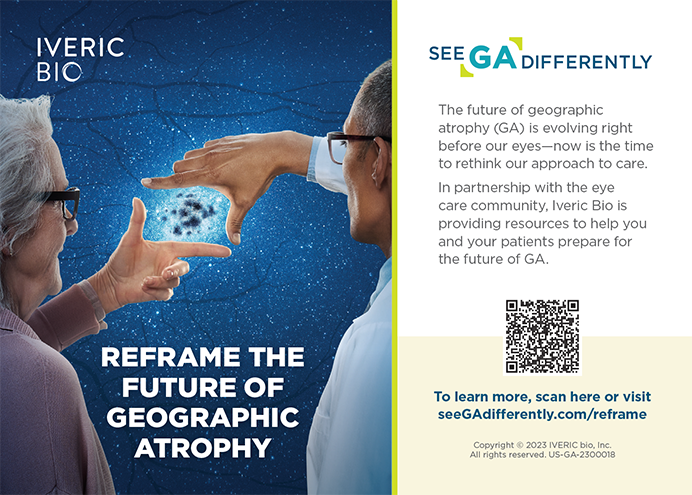
Many eye care providers are concerned only with the ocular surface manifestations of allergy, but the totality of the problem with respect to allergies is not visible through the slit lamp.
Patients with ocular allergies deserve an approach to treatment that considers their entire health, including the systemic manifestations as well as the ocular signs and symptoms. Remember, although the patient is presenting for an ocular surface condition, allergy is a systemic disease, and it should be treated as such. There is a high correlation between allergic rhinitis and ocular allergy, and there is a correlation between asthma and rhinitis, because it is all one large mucus membrane. This concept, the “one-airway philosophy,” recognizes that the ocular surface is connected via the nasal lacrimal duct to the nose, the eustachian tubes to the ears, down to the bottom of the throat, down into the lungs, and into the peripheral bronchial tree.
This emerging concept radically changes the way we eye care practitioners are taught to think about allergy when patients present with itchy eyes, this and other changing trends are important to be aware of so that we can help patients with allergies.
At a Glance
• Although a patient is presenting for an ocular surface condition, allergy is a systemic disease, and it should be treated as such.
• The one-airway philosophy recognizes that the ocular surface is connected via the nasal lacrimal duct to the nose, the eustachian tubes to the ears, down to the bottom of the throat, down into the lungs, and into the peripheral bronchial tree.
• It is important to be aware of changing trends, like e-cigarettes. The risk of pulmonary dysfunction associated with e-cigarettes may be five to 15 times higher than with regular cigarette smoking.
Electronic CIGARETTES
Electronic cigarettes (e-cigarettes) have been introduced as an alternative to smoking. They are presumed to be safer, and insofar as they do not contain nearly the level of carcinogenic toxins that are in the average cigarette, this is true. Yet, the ingredients of some of these products is, frankly, a concern, and the side effects of their use are troubling.
The perception that e-cigarettes are a 100% safe alternative to smoking is false, and patients should be counseled properly about their use. E-cigarettes typically contain propylene glycol, glycol, or both as well as nicotine and flavor chemicals.1 During the vaporization of these chemicals, glycol breaks down into formaldehyde, which, when inhaled, is associated with decreased pulmonary function as well as being carcinogenic. In fact, the risk of pulmonary dysfunction associated with e-cigarettes may be five to 15 times higher than that of traditional smoking.1
One of the more upsetting aspects of these products is that they are available to minors, and they often contain flavors that appeal to younger individuals. Yet, they contain compounds such as dyethylene glycol, which is often used in antifreeze.2 There have been reports of cartridge leaks in some products, which yields a risk for massive nicotine exposure.2
Rather than being a safe alternative to smoking, e-cigarettes may be a burgeoning public health crisis all their own.
RISING POLLEN COUNTS
Global warming has changed the environment in which we all live and breathe. It is causing unquestionably higher pollen counts secondary to warmer temperatures. Seasons are getting longer, and therefore plants pollinate longer. As a result, the concept of “allergy season” is largely forgotten in modern allergy practice. Where I practice in Southern California, we do not have a true winter. We are in severe drought situations most of the year, and thus, we have high pollen counts year-round. Of course, pollen counts are going to be highest in the springtime, but it is foolhardy to dismiss the plausibility of ocular allergies simply because of the calendar month.
Another misconception I hear frequently is that ocular allergies cannot occur during winter months or when snow is present. Mold allergies are a prevalent and common malady that may affect untold numbers of patients. Whenever dark and wet environs exist, there is potential for mold to grow, release spores, and induce an allergic response in a susceptible individual.
EMERGING TREATMENT
Fortunately, there is also good news in the world of allergy, as new, stronger formulations of ocular allergy treatments are now available. For many years, olopatadine HCl ophthalmic solution 0.2% (Pataday; Alcon) has been the preferred treatment for ocular allergy, as it is available for once-a-day use. This combination mast-cell stabilizer and an antihistamine has a high affinity for most ocular allergens and has proven safe and effective.
Now, a stronger formulation of this agent is available. Pazeo (Alcon) has a concentration of 0.7%. It is a highly viscous solution, offering very good ocular surface adherence, but that comes with a slight tradeoff in terms of issues with blurring of vision.
PIPELINE
Some interesting products in the pipeline warrant attention. Eleven Biotherapeutics has an agent that was originally being tested for dry eye that is now being investigated for the treatment of ocular allergies. The company announced earlier this year that the first patients are being dosed in a phase 3 trial of EBI-005 in patients with moderate to severe allergic conjunctivitis.
When Shire recently purchased Foresight, it acquired the rights to the latter’s ocular allergy portfolio. Likewise, Valeant bought Nicox and received its interests in ocular allergy as part of the deal. There is also some early-stage work being done to investigate whether a topical formulation of cetirizine, the active ingredient in Zyrtec (McNeil-PPC), might be relevant for allergic conjunctivitis.
An interesting and compelling area of research deals with immunotherapy tablets, which may be a way to avoid immunotherapy vaccines. Merck has developed a product called Ragwitek, which is a tablet with low levels of ragweed allergen. Patients take the pill, and it trains the immune system to react—but not overreact—to the ragweed allergen.
The tablet is an interesting concept, although one surrounded by a fair amount of controversy. For immunotherapy to work, it has to be given at a high enough dose to induce an immunologic response; if it is too high, it can induce an anaphylactic reaction. Because there is no way for the treating physician to titrate the dose, the tablet may be of questionable utility.
I am involved in some research looking at whether the caruncle might be a reservoir in which allergens nestle. My colleagues and I are learning that, as allergens drain from the puncta, they may collect in the caruncle. It is the source of the highest concentration of immunological factors, and this appears to correlate with the fact that patients with ocular allergies associate their itch with the nasal part of the eye.
CONCLUSION
In some ways, the eye care practitioner’s role in managing ocular allergy may be the perfect manifestation of this concept. Changing environmental factors and an evolving understanding of allergy in terms of a whole-airway concept may grow the role of eye care providers in managing patients’ allergic disease.
1. Jensen RP. Luo W. Pankow JF, et al. Hidden formaldehyde in e-cigarette aerosols. N Eng J Med. 2015;372;392-394.
2. Foggs MB. E-cigarette controversy. ACAAI News. American College of Allergy, Asthma and Immunology. 2013.
Milton Hom, OD
• private practice in Azusa, California
• eyemage2@gmail.com
• financial disclosure: consultant to Allergan and Shire


